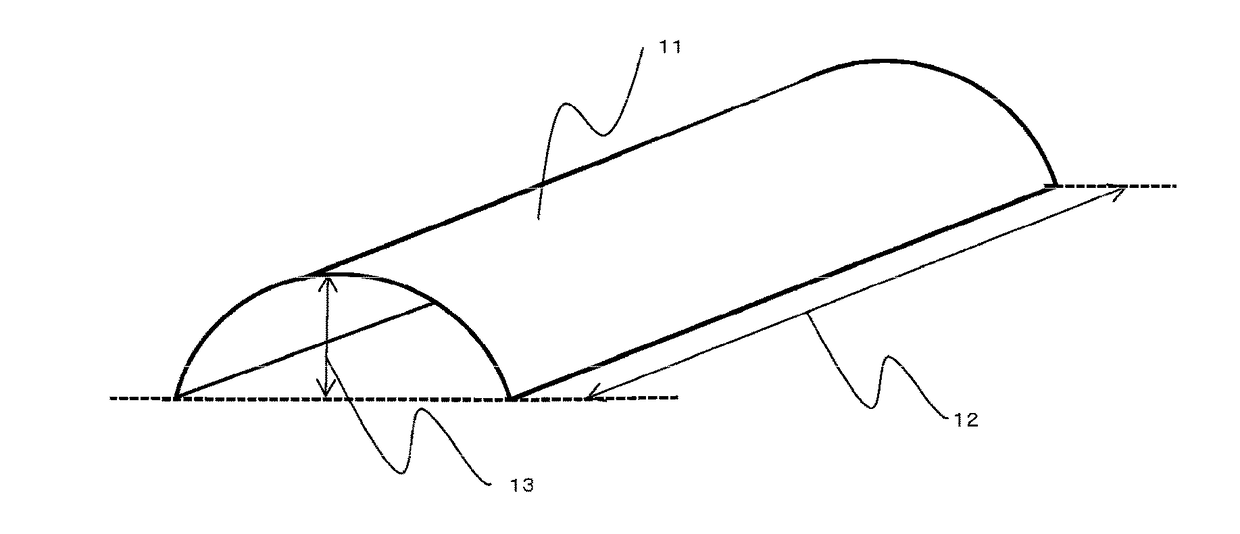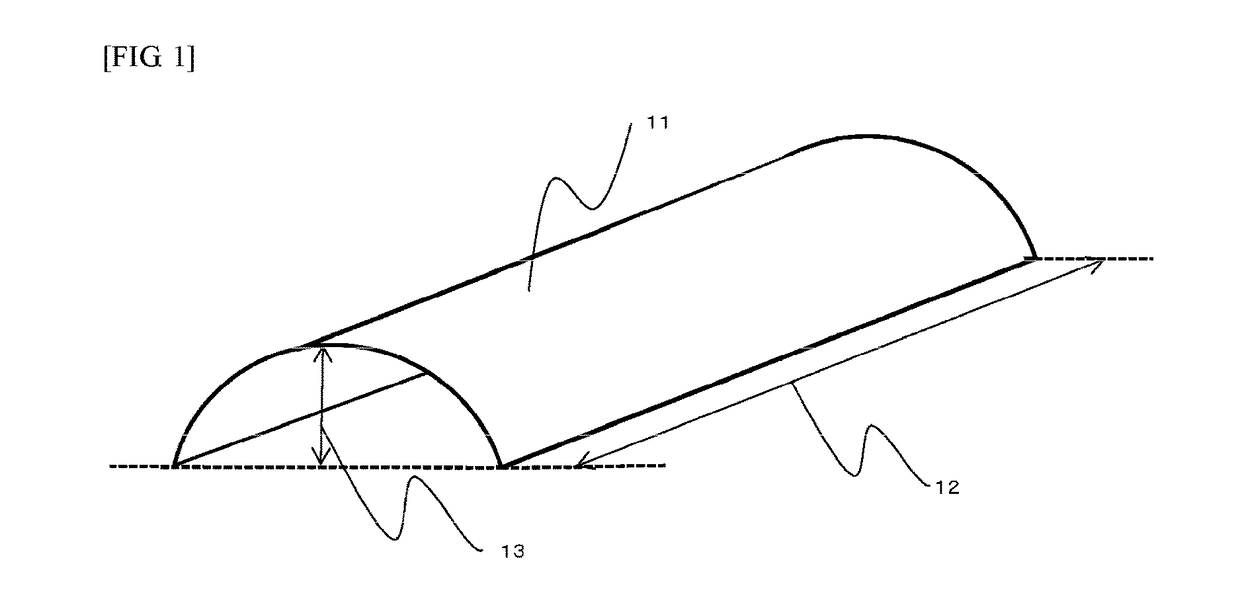Polyolefin microporous membrane and production method thereof
a polyolefin microporous membrane and microporous membrane technology, applied in the direction of membranes, cell components, cell component details, etc., can solve the problems of difficult to obtain a roll of polyolefin microporous membrane with a good winding, marked curling of polyolefin microporous membrane used in separators, etc., to suppress curling, excellent appearance, and excellent pin puncture strength and air permeability
- Summary
- Abstract
- Description
- Claims
- Application Information
AI Technical Summary
Benefits of technology
Problems solved by technology
Method used
Image
Examples
working example 1
Polyolefin Microporous Membrane
[0133]A mixture was obtained by dry-blending 0.375 parts by weight of tetrakis[methylene-3-(3,5-ditertiary-butyl-4-hydroxyphenyl)-propionate]methane into 100 parts by weight of a polyethylene (PE) composition comprising 60 wt. % of an ultra-high molecular weight polyethylene (UHMWPE) having a weight average molecular weight (Mw) of 1.0×106 and 40 wt. % of a high-density polyethylene (HDPE) having a Mw of 2.8×105.
[0134]A polyethylene solution was prepared by charging 25 parts by weight of the obtained mixture into a strong kneading type twin-screw extruder (charged amount of polyethylene composition Q: 54 kg / h), supplying 75 parts by weight of liquid paraffin from a side feeder of the twin-screw extruder, and melt-kneading at a temperature of 210° C. while maintaining the screw rotation speed Ns at 180 rpm (Q / Ns: 0.3 kg / h / rpm).
[0135]The obtained polyethylene solution was supplied from the twin-screw extruder to a T-die and was extruded so as to form a s...
PUM
| Property | Measurement | Unit |
|---|---|---|
| thickness | aaaaa | aaaaa |
| thickness | aaaaa | aaaaa |
| thickness | aaaaa | aaaaa |
Abstract
Description
Claims
Application Information
 Login to View More
Login to View More - R&D
- Intellectual Property
- Life Sciences
- Materials
- Tech Scout
- Unparalleled Data Quality
- Higher Quality Content
- 60% Fewer Hallucinations
Browse by: Latest US Patents, China's latest patents, Technical Efficacy Thesaurus, Application Domain, Technology Topic, Popular Technical Reports.
© 2025 PatSnap. All rights reserved.Legal|Privacy policy|Modern Slavery Act Transparency Statement|Sitemap|About US| Contact US: help@patsnap.com


